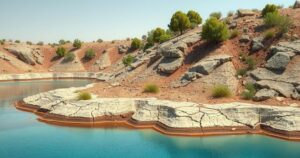Research Disproves Nuclear Test Claims Linked to Iran Earthquake

A study confirms that the 4.5 magnitude earthquake in Iran was not a nuclear test, contrary to claims spread on social media and certain news outlets. Led by Dr. Benjamin Fernando at Johns Hopkins University, the research relies on seismic data, emphasizing the crucial role of accurate scientific information in geopolitics. The study calls for rapid-response collaborations among seismologists to counter misinformation effectively.
Recent research asserts that a 4.5 magnitude earthquake in Iran was not a result of a nuclear test as previously speculated. Published in the journal Seismica, this study aims to counter widespread claims on social media and certain news outlets that suggested the Iranian regime may have conducted a covert nuclear weapons test following the quake on October 5, 2024.
The research, led by Dr. Benjamin Fernando from Johns Hopkins University, emphasizes the importance of accurate scientific information, particularly amid geopolitical tensions. Dr. Fernando remarked on the misinformation campaign surrounding the earthquake, stating, “There was a concerted misinformation and disinformation campaign around this event that promoted the idea this was a nuclear test.”
Analyzing seismic data from the earthquake’s epicenter, the team found that it was a natural phenomenon caused by tectonic activity in the region rather than any man-made event. The earthquake occurred near Semnan, in an area known for its seismic activity due to the collision between the Arabian and Eurasian tectonic plates, aligning with historical seismic patterns observed since 2015.
Dr. Fernando elaborated on how seismic waves provide detailed information about their origin: “By recording the waves at different points on the Earth’s surface, we can work out what the properties of the source that produced them were.”
Despite clear scientific evidence, misinformation regarding a nuclear connection to the earthquake spread rapidly on social media within minutes, further fueled by references to unrelated seismic events in nearby regions. Notably, one of the most shared posts promoting the false narrative originated from a social media account associated with Russian disinformation efforts.
Moreover, several mainstream media outlets, including those from India, Israel, and the United States, disseminated these inaccurate claims, often citing each other and misinterpreting the seismic data. The spread of this misinformation highlights the critical need for responsive collaboration among seismologists, allowing for timely corrections and clarifications.
In light of these events, co-author Dr. Saman Karimi advocated for prompt reporting by scientific agencies to counteract misinformation, suggesting that swift dissemination of accurate information could minimize misleading narratives. This could potentially be achieved through partnerships between social media platforms and credible scientific organizations.
In October 2024, an earthquake measuring 4.5 on the Richter scale occurred near Semnan, Iran, prompting allegations that it was linked to a nuclear test. Such claims arose amidst heightened tensions in the Middle East, with social media rapidly spreading the narrative. Subsequently, a team of researchers from Johns Hopkins University conducted a study to analyze seismic data, aiming to clarify the situation and counter misinformation about the earthquake’s origin. The geopolitical context adds complexity to the situation, given the ongoing concerns regarding nuclear activities in Iran. The earthquake’s occurrence in a seismically active region further amplifies interest in understanding the event’s true cause versus speculated connections to nuclear testing.
The investigation led by Dr. Fernando disproves claims linking a recent earthquake in Iran to a nuclear test, showcasing the significance of accurate scientific interpretation in the field of seismology during politically charged times. The pervasive misinformation emphasizes the need for scientists and media to collaborate in presenting factual narratives promptly, mitigating the spread of erroneous claims based on insufficient data or intentional disinformation. Researchers advocate for strategic partnerships to enhance the circulation of verified scientific information to combat misleading narratives in real-time.
Original Source: www.news-expressky.com






